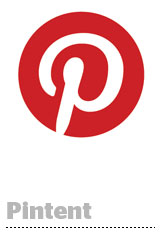
Pinterest filing its S-1 late last week makes it the last of the social media walled gardens to go public.
The OG Facebook might still be in a class of its own, but Pinterest bears comparison to Snap, which filed its S-1 in 2017, and Twitter, which filed a lifetime ago in 2013.
Notably, while Twitter’s revenue exploded with a 198% increase the year it filed, both Snap and Pinterest had more modest gains, both around 60%.
Another thing to note is that Pinterest’s ARPU is pretty healthy, particularly in the United States, where it’s $9.04. That could validate its positioning as a platform that actually drives purchase intent.
The following is a cheat sheet comparing Pinterest and its walled garden brethren.

S-1 filed: March, 2019
Summary: A search and visual discovery platform
Revenues: Pinterest had a 60% revenue increase between 2017 and 2018, from $472.9 million to $755.9 million.
Monthly active users (MAUs): 250 million. Pinterest also looks at how many MAUs are also weekly active users (WAUs). By December 2018, 57% of monthly users were also weekly users.
Pinterest’s growth in MAUs is mostly international. For instance, its US Q4 2018 MAU count was 82 million compared to 76 million during the same period in 2017 (an 8% YoY increase). By contrast, Pinterest’s international Q4 2018 MAU count was 184 million compared to 139 million during the same period in 2017 (a 32% YoY increase).
Average revenue per user (ARPU): Although Pinterest shows impressive international growth, it’s most successful at monetizing US audiences. Its US ARPU in 2018 was $9.04 (up 47% compared to 2017), compared to an international ARPU of $0.25 (up 22%). Global ARPU was $3.14.
Cost of revenue: Between 2017 and 2018, Pinterest’s cost of revenue jumped 35%, from $178,664 million to $241,584 million.

S-1 filed: February 2017
Summary: A camera application
Revenues: Between 2015 and 2016, Snap’s revenue increased 59%, from $58.7 million to $404.5 million.
Daily active users: Unlike Pinterest and Twitter, Snap focuses on daily active users (DAUs). It had 158 million when it filed its S-1.
ARPU: Snap’s global average ARPU, in the three months that ended on Dec. 31, 2016, was $1.05. Its’ North America ARPU in those three months was $2.15 compared to $0.65 for the same period in 2015.
Cost of revenue: Between 2015 and 2016, Snap’s cost of revenue shot up 123%, from $82.2 million to $183.7 million.

S-1 filed: October 2013
Summary: A platform for real-time conversation
Revenues: Between 2011 and 2012, Twitter’s revenues went from $106.3 million to $316.9 million, a 198% increase
MAUs: 215 million globally
ARPU: Twitter looked at how much revenue it generated per timeline view. In the three months ended June 2013, it got $0.80, up 25% YoY. That amounted to an average of $2.17 per timeline view in the United States (up 26%), and $0.30 internationally (up 111%).
Cost of revenue: Between 2011 and 2012, cost of revenue increased 108%, from $61.8 million to $128.8 million
This post was syndicated from Ad Exchanger.


More Stories
Question Everything
TBWA\Group NZ appoints Simon McCorkindale as Tech Director
Impossible Foods Converts a Cattle Ranch to Make Meat ‘The New Way’